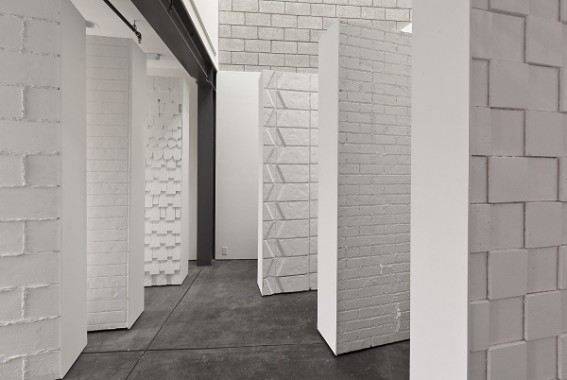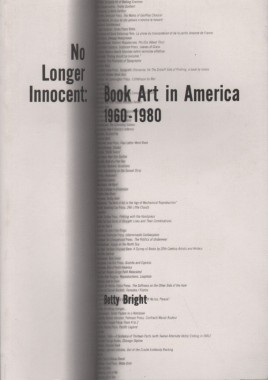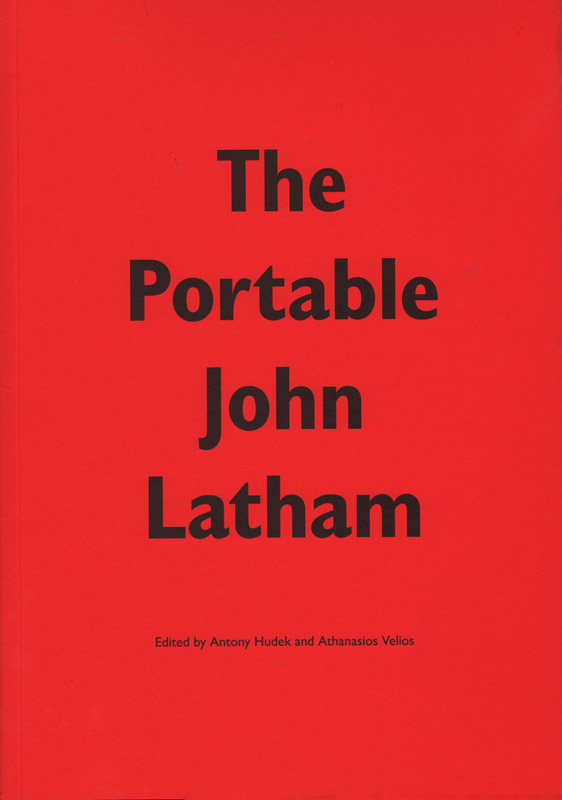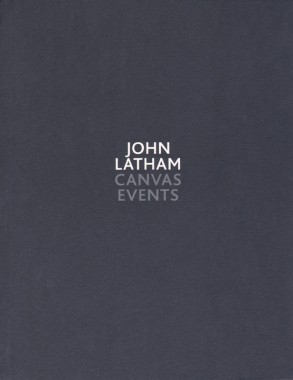
Book Affair
Saturday, February 11, 2012
10am-4pm
Organized by Fiona Connor & Co.
Various Small Fires
1212-B Abbot Kinney Blvd.
Venice, CA 90291
www.vsf.la
Book Affair will function as both a fair and a temporary library and will take place within the
current installation, ‘Murals and Print’ by Fiona Connor.
While books will be offered for sale, the event will also be an opportunity for local publishers and artists to share titles and editions that are not always available to the Los Angeles community.
Along these lines, each participant will bring five books for either selling and/or sharing. A comprehensive bibliography with all participants and their titles will also be compiled and distributed. There will also be a xerox machine located on the premises for visitors to use.
Textfield, Inc. will display 5 books less than 10 inches, on a shelf provided by the organizers, and an Eduardo Sarabia vase/sculpture, placed on the seat of a chair/pedestal.
Book Affair will also display furniture made specifically for the event by Tahi Moore, Joshua Nathanson, Michael Ned Holte, and Fiona Connor among others.
Participants include: 2nd Cannons, A-Z video, Chinatown: the sequel, Dexter Sinister, Harsh Patel, Henry Glover, Kaleidoscope, Ooga Booga, Prism of Reality, Semiotexte, Textfield, Inc., Works Sited, and WorldFood Books.
2nd Cannons, A-Z video, Anthony Pearson, Antony Hudek, Athanasios Velios, Book Affair, Book Fairs, Bücher & Hefte, Chinatown: the sequel, Dexter Sinister, Distribution, Ed Ruscha, Eduardo Sarabia, Exhibitions, Fiona Connor, Harsh Patel, Henry Glover, John Latham, Jonathan Maghen, Joshua Nathanson, KALEIDOSCOPE Press, Kunstverein, Michael Ned Holte, Midway Contemporary Art, Occasional Papers, Olivian Cha, Omar the Beggar, Ooga Booga, Paul Gerhard Diez, Payam Sharifi, Prism of Reality, Semiotexte, Slavs and Tatars, Tahi Moore, Various Small Fires, Works Sited, WorldFood Books

Betty Bright, No Longer Innocent: Book Art in America 1960-1980
Softcover, 320 pp., offset 4/1, 7 x 10 inches
Edition of 2000
ISBN 978-1-887123-71-6
Published by Granary Books
$40.00 ·
This important history of the artist’s book, a flourishing form which over the years has often been greeted with confusion by critics, collectors, historians and artists, aims to spell out its role in contemporary art and to claim for it a vital and heretofore unacknowledged status since the blossoming of the artform in the 1970s. Renowned scholar and curator Betty Bright takes an inclusive view of the varied field in order to redress its marginalization, identifying three distinct types: the fine press book, the deluxe book, and the bookwork. She covers crucial supporters of the form, like New York’s Center for Book Arts, Franklin Furnace, and the Visual Studies Workshop Press in Rochester, New York, as well as key organizations and figures in Chicago, Atlanta, San Francisco and Los Angeles. Bright examines how artist’s books have responded to specific movements, such as Pop, Fluxus and Conceptualism, and how the book arts’ own mini-art world of the 1970s was shaped by seminal exhibitions, fledgling nonprofit organizations and collectors.
Art, Betty Bright, DAP, Dieter Roth, Ed Ruscha, Emily McVarish, John Latham, Lucas Samaras, Marcel Broodthaers, Marcel Duchamp, Phillip Gallo, Richard Tuttle, Sol LeWitt

Antony Hudek and Athanasios Velios, The Portable John Latham
Softcover, 112 pp., offset 2/1, 170 x 250 mm
Edition of 1000
ISBN 978-0-9562605-5-0
Published by Occasional Papers
$22.00 ·
This book features a selection of documents from the personal archive of the late British artist John Latham (more information
here), presently maintained in his last home and studio in Peckham, South London. Through reproductions of letters, invitation cards, exhibition reviews, performance scripts and images, the publication retraces Latham’s pioneering practice over six decades, from the late 1940s to his death in 2006. Published on the occasion of
John Latham: Anarchive in association with Whitechapel Gallery, the book also includes an interview by Charles Harrison from 1968 and a glossary section.
Edited and introduced by Antony Hudek and Athanasios Velios.
In the painting and sculpture for which he is best known, Latham’s primary materials included glass, books, canvas and the spray gun. Developing alongside this concise visual language, from the mid-1950s onwards, was a cosmological theory, formulated through his art-making discoveries, that considered time and event to be more primary than the established means of understanding, based on space and matter. Termed Time-Base Theory (sometimes Flat Time Theory or Event Theory) it offers an ordering and unification of all events in the universe, including human actions, and allows an understanding of the special status of the artist in society.
Latham looked at the way in which human knowledge has become fragmented over time; split by divergent religions, ideologies and world-views. He identified the way in which the fields of science and art, despite emerging from a common root, have become separate and operate in isolation of one another: even within a field such as physics, there exist a large number of schisms and specialisations that further fragment our knowledge and understanding of the universe. John believed that this endless division would eventually lead to a kind of entropy and from that state, to a disintegration of society.
Antony Hudek, Art, Athanasios Velios, Charles Harrison, Criticism, Culture, Distribution, John Latham, Occasional Papers, Sara De Bondt, Science, Theory, Typography

John Latham, Canvas Events
Softcover, 24 pp., offset 4/1, 215 x 275 mm
Edition of 1000
ISBN 978-1-905464-31-9
Published by Ridinghouse
$22.00 ·
Published on the occasion of the exhibition
John Latham, Canvas Events
at Karsten Schubert / Richard Saltoun
5 May — 11 June 2010
This small but impeccably produced catalog introduces a never-before-exhibited series of works by the late British artist John Latham (1921-2006). The 1994 works called, Canvas Events, features spray-painted and twisted canvas on wooden stretchers. The works challenge the conventional relationship between canvas and stretcher, turning the traditional site of the painting into a sculptural field. Latham often worked with spray paint; he often described the dotted sprinkled result as miniature universes. Reproductions of the 1994 Canvas Events are accompanied by a conversation between Latham, Hans Ulrich Obrist and Barbara Steveni, in which they discuss the artist’s work over time.
Art, Barbara Steveni, Hans Ulrich Obrist, Interview, John Latham, Karsten Schubert, RAM, Richard Saltoun, Ridinghouse, Tim Harvey



